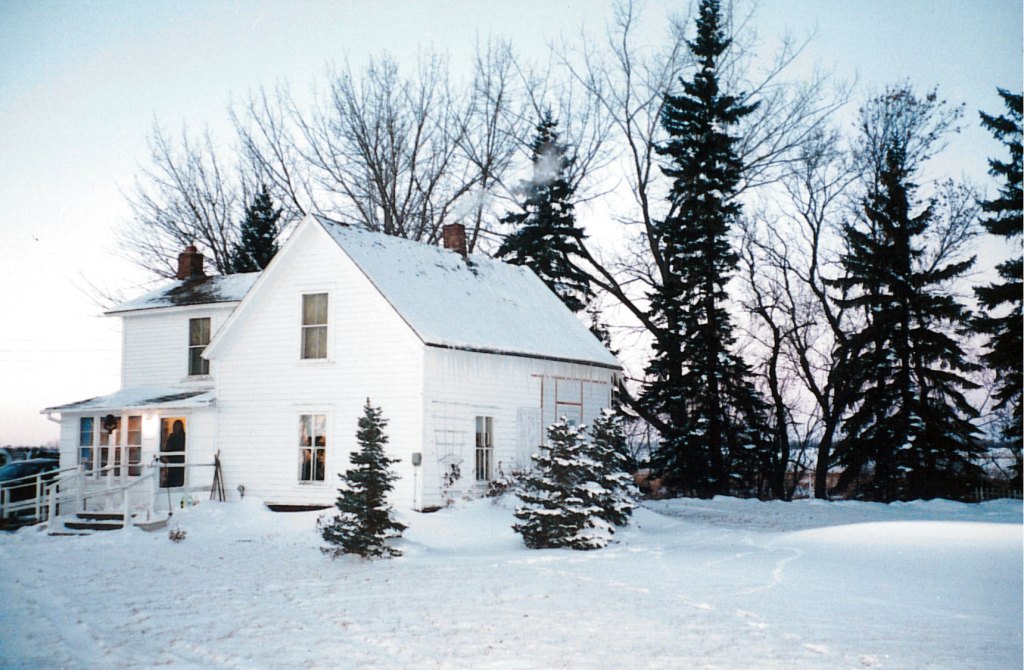
Built in 1902 by my great-grandfather, painted white to keep cool in scorching North Dakota summers, the simple, sturdy farmhouse in this photo has witnessed over a century of history: births, deaths, celebrations, and too many blizzards to count.
John Blocher first visited North Dakota in 1900 and purchased a homestead the next year. In 1902 our family emigrated from Indiana by train – livestock, lumber, building supplies, furniture, and people all in different railcars. They parked on a side track near the small town of Norwich and started to build: first a tiny, two room shanty that still stands on the property. The farmhouse began with two rooms on each level; later additions were a kitchen, third upstairs room, coal shed, porch, and (much later) an indoor bathroom. With no central heat and only wallpaper for insulation, the upstairs was bitterly cold in winter; my mother remembers hanging wet laundry that would freeze dry. Eventually other outbuildings went up, including a garage, workshop, and barn. Three generations of Blocher and Hadler farmers raised cattle on the surrounding acres, and grew red durum wheat destined for packages of spaghetti marked “Made in the USA.”
My grandmother, Dora Blocher Hadler (the youngest of John’s nine children), was born in 1908 and lived in the farmhouse nearly her entire life. She had a garden full of prize lilies and a “Sooie!” that could corral loose herds of cattle back to their pen. That same will brought her six children, twelve grandchildren, and an assortment of friends and cousins back each summer for annual reunions that continue to this day – but no longer at the farm. Thirteen years after her death, the house sits empty, waiting for the next chapter of our family’s American story.
- Read more American Stories.
- Share YOUR American Story and we’ll publish it on the PNB Blog.
- Come see American Stories at PNB, June 3-12





